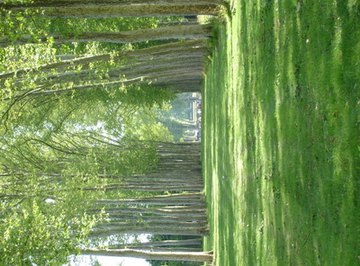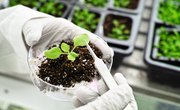
Glucose is classified under a reducing monossacharide since it contains aldehyde – a class of organic compounds that contain the group CHO, which produces alcohol when reduced and acids when oxidized. Green plants manufacture glucose during photosynthesis. Excess glucose in leaves is converted into starch, which is stored as energy. Most leaves give a negative test for glucose due to the conversion. You can measure the level of glucose in leaves through three tests: Fehling’s, Tollen’s and Benedict’s.
- Leaves
- Benedict’s solution
- Beaker
- Boiling tube
- Bunsen burner
- Distilled water
- Forceps
- Tollen’s reagent
- Fehling’s reagent.
Testing for glucose in leaves usually gives negative results since the glucose in most leaves is readily converted to starch. Most experiments thus test for starch in leaves. Due to the variation of leaves, repeat measurements and analyses to cover for any errors that occurred during the experiment or for natural variations.
Fill a test-tube with Fehling’s solution and add the filtrate of ground leaf and water mixture. Place the test-tube with the solution into a beaker with boiling water. Leave the tube in the water for a few minutes and record any changes that you observe. Fehling's solution is an alkaline (NaOH) used to measure glucose levels in plants. The solution turns orange-red from its reaction with glucose and is reduced to copper (I) oxide (Cu2O).
Heat water in a beaker until it boils. Dip a leaf into the water using the forceps; this kills the cells to allow permeability of the reagent used to test glucose. Remove the leaf from the boiling water and grind it, adding distilled water as you grind. Filter the mixture into a test-tube through a filter paper. Add two drops of hydrochloric acid into the filtrate and place the test-tube in the boiling water. Leave it there for a few minutes. Note the color changes. Glucose reduces copper (II) ion (Cu2+), in Benedict’s solution to copper (I) ion (Cu1+). The solution, which is usually blue, will change to green, yellow, orange and finally, red. This shows the presence of glucose.
Use Tollen’s reagent – a colorless aqueous solution which contains silver ions with ammonia [Ag(NH3)2+] – to test for glucose in leaves. Note that the solution is oxidized into carboxylic acid if glucose is present. The silver ions in the reagent are reduced to form metallic silver precipitate which tends to form a mirror on a test-tube.
Things You'll Need
Tips
References
Tips
- Testing for glucose in leaves usually gives negative results since the glucose in most leaves is readily converted to starch. Most experiments thus test for starch in leaves. Due to the variation of leaves, repeat measurements and analyses to cover for any errors that occurred during the experiment or for natural variations.
Photo Credits
trees image by Marta Reimpell from Fotolia.com
